Dear Coach,
We have been sampling gymnastics facilities to look for a program where the coaching staff seemed to understand that 99% of the kids participating would excel and grow through participation, but ultimately would not be Olympians. No coaches barking out orders or “punishing” kids for mistakes along their individual physical learning curves. Overall, I was impressed by your program and it seemed to fit the bill. Your staff seemed to have a good balance between fun, developmentally appropriate challenge, practicing old skills and safely learning new ones. Until it came to “strength training” at the end of their session. **
In addition to wearing my mom hat, I am also a women’s sports medicine physical therapist that specializes in returning women to fitness and sport after injury and pregnancy. This area of focus demands that I understand and keep up with emerging research about the core, how it develops in girls, how to recover it after injury. I have some concerns I wanted to pass on about the messaging the coach communicated to the girls (9-12) about their cores. The coach asked the girls to feel their abdomens and determine if they were “soft, hard, or somewhere in the middle”. He told them it should be hard and he wanted them to have “strong cores”. He then proceeded to ask them to perform a series of planks and high reps of a few variations of crunches.
He is not alone in this widely accepted understanding that strong abs define a “good” or “strong” core. However, this information, while still the standard of training and sport, is rapidly becoming outdated. Please accept this not as a disparagement of him or the program, but an opportunity to share with you and your staff how a decade or so of research is transforming our understanding of how we create a strong sturdy center that anchors all of our movements. Trust me I have done my share of abdominal work with clients, this emerging evidence often makes me wish I could turn back time.
Turns out a strong center does not rely on strengthening any one muscle group alone. Instead, we now understand that central stability, is actually about balancing the pressures inside the abdominal cavity. This is achieved through the teamwork of all the muscles surrounding that cavity from deep to superficial. I think of this pressure system inside the abdomen as an air-filled balloon.
Imagine squeezing the balloon in the middle, just like the pressure a sustained abdominal hold would create. The causes the air in the balloon to shift up, out the top, and down, out the bottom.
This means the diaphragm above and pelvic floor below must alter their function to meet this change in the pressure system. For the diaphragm this results in a change in breathing patterns, including breath holding, to meet stability challenges, and reduced respiratory capacity. These scenarios will create an issue for sustained respiratory support for endurance in athletics. The pelvic floor may not be able to match the excessive pressure from above, which can lead to incontinence. We are growing in our awareness of the magnitude of the issue of leaking during sport among elite (and not so elite) female athletes (read more here). Alternatively, over-recruitment of the pelvic floor to try to match the pressure from above, can lead to pelvic, low back and/or hip pain.
Alternative models are emerging that don’t sacrifice a strong abdominal wall, diaphragm or pelvic floor function. Instead they train the abs along side and in a balanced way with the other muscles that keep our air filled balloons the right shape, not excessively pushed in one direction over another.
In addition, over-reliance and training of one muscle group also changes postural alignment. We are growing in our understanding of which positions optimally recruit the muscles at our center (1,2). Overused abdominals result in bums tucking under and the lower spine flattening, which results in a less than optimal position of recruitment for the pelvic floor, deep abs, and specific spinal muscles. Respiratory pattern changes necessitated by abdominal overuse often results in a high chested position that shifts the ribcage to the back. Both of these alignment shifts will change the shape and position of our balloon. This alters our central stability and forces compensations that will impact quality of movement, balance, muscle recruitment and strength, endurance and vulnerability of injury (3,4).
This information is important for all levels and ages of athlete to understand. However, it is critical that we start our younger athletes in particular off on the right foot. We are shaping their physical future. For the girls my daughters age through their teens we are quite literally “shaping” them as they begin to develop through puberty. We can guide that physical growth and change with the great information at our disposal or hamper it.
Here are some tips and ideas to use this emerging information on central stability to enhance your already great program. First, no more crunches! They encourage an overtraining of the abs, excessive pressure in the middle of our balloons, alter alignment, and additional studies (5) have shown excessively create pressure on low back discs and structures over time. Planks, in good alignment (see pictures below) that keep the bum untucked and ribs not excessively swayed back, are a better trainer of the postural system as a whole.
Having said that we must consider how kids develop best….they were designed to strengthen through play! Isn’t a handstand in good alignment essentially an inverted plank? A cartwheel is just a plank in motion. And really let’s be honest, both are a lot more fun. Maintaining balance on a beam while performing a quick jump with good form demands a lot from that central stability system and trains it in a functional and fun way….no added strengtheing necessary. Balance games in good alignment at the end of the session will do more to strengthen their centers in a meaningful way than 100‘s of crunches or planks.
Good alignment is the common denominator to making these fun tasks a healthy challenge to the central stabilizers. So rather than encouraging a tummy hold during these tasks, asking them to untuck their bums and stack their ribs over their pelvis’ gives their balloons a fighting chance to create deep central stability. This added attention to form increases the challenge, and it trains the postural system in a good alignment that will then be reinforced in their day to day movements. This will encourage some serious inner strength all day, not just during a 5-minute set of crunches. Breathing while performing activities, versus breath holding, will also help them to maintain the appropriate balance of pressures on our balloons. Breath holding as they try to learn a new skill is normal but they should ultimately be able to move beyond that as they master the task. Or the task needs to be modified so they can perform it without the need to hold their breath.
Finally, let’s consider the message we are sending the girls at such a young age about their shape and level of abdominal ‘softness’. They have a lifetime ahead of being self-conscious, culturally bombarded with images of physical perfection and made to feel like they are less beautiful than a stick thin model. Let’s challenge these notions from the get-go with positive talk about strength, health, fitness, and stability over words like soft or hard abs.
Again, please do not read this as an attack on your program, but rather I really do come in peace. My ultimate goal is to combine fun and fitness for my girl and all girls without expecting them to have grown-up programs that expect “hard abs” at 9-12. I understand this is relatively new information and we are all on a steep learning curve how best to apply it and build age appropriate programs around it. Working together we could build a healthy (physically and emotionally) generation of girls. I would be more than happy to answer any question you or your staff may have as you try to assimilate this information.
Let me know if I can be of any further assistance.
Julie Wiebe, PT
www.juliewiebept.com
**Some detail of our experiences in this pursuit have been modified to generalize the information for the purposes of this blog. However, the statement of the coach is accurate.
- McDonald D, Moseley GL, Hodges PW. Why do some patients keep hurting their back? Evidence of ongoing back muscle dysfunction during remission from recurrent back pain. Pain. 2009; 142: 183-188.
- Sapsford RR, Richardson CA, Maher CF, Hodges PW. Pelvic floor muscle activity in different sitting postures in continent and incontinent women. Arch Phys Med Rehabil. 2008;89(9):1741-1747.
- Hodges PW, Gandevia SC. Changes in intra-abdominal pressure during postural and respiratory activation of the human diaphragm. J Applied Physiol. 2000;89:967-976.
- Smith MD, Coppieters MW, and Hodges PW. Is balance different in women with and without stress urinary incontinence? Neurouro Urodyn. 2008; 27, no. 1: 71-78.
- McGill, S. Low Back Disorders, Evidence-Based Prevention and Rehabilitation, 2nd Edition. (p. 44-47) Human Kinetics (2007)
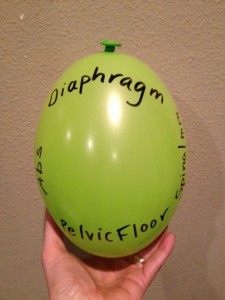
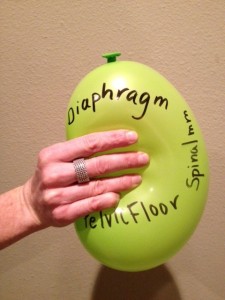
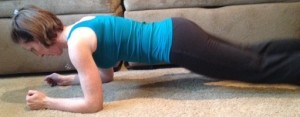
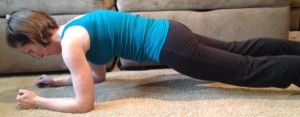
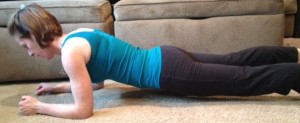
5 thoughts on “Dear Coach….”
Hi Julie,
I just wrote a point-counter-point to your Dear Coach letter. I had been meaning to defend the lowly crunch for some time so your post was a great stimulus. http://www.thebodymechanic.ca/?p=1313
It provides an alternative view of the crunch. Like most things I think we agree on 90% of things but I quibble on the small aspects of your argument.
Your website is really quite lovely.
Best,
Greg
Hey Greg,
No attack perceived, I thought you made awesome points in your blog. Will respond at length to continue the conversation soon. Thanks for thoughtfully weighing in on the blog. More soon. Julie
I have posted a response to Greg’s blog. Lots of layers to consider as we approach patient care and training.
Dear Greg: http://www.juliewiebept.com/fitness/dear-greg/
Enjoy! Julie Wiebe, PT
Another option was offered to me by a therapist (ex-dancer) at a recent workshop. She reported she had suffered many of the symptoms outlined above, and had been instructed in Kegel exercises for her incontinence. She noted that these exercises had aggravated rather than helped her. A yoga therapist had then advised her to purchase a tennis ball and sit on it with the ball (placed on a firm surface such as a carpeted floor) strategically placed under the perineum, between anus and the vagina; and to allow the pressure onto the ball to deeply relax the pelvic floor muscles for five to 10 minutes daily. She reported that this procedure was somewhat uncomfortable at first, but that the effects were dramatic in terms of her symptoms. I have since recommended this to several patients for home use and all have reported benefit.
Yes, the mechanism for incontinece and pelvic floor dysfunction has many avenues for change. Often the pelvic floor is vigilant, fighting a very active abdomen above. That overuse of the pelvic floor can lead to stiffness or spasm that also messes with the balance in the pressure system that can impact the continence mechanism. The tennis ball type release can help with that. Too aggressive for some tho. A deep squat is also a great way to open and relax the pelvic floor. Lots of big breaths, and relaxing the PF on inhale in that position can make a nice change. Thanks for weighing in!
Julie
Comments are closed.
This blog provides general information and discussion about medicine, health and related subjects. The words and other content provided in this blog, and in any linked materials, are not intended and should not be construed as medical advice. If the reader or any other person has a medical concern, he or she should consult with an appropriately licensed physician or other health care worker.
Never disregard professional medical advice or delay in seeking it because of something you have read on this blog or in any linked materials. If you think you may have a medical emergency, call your doctor or 911 immediately.